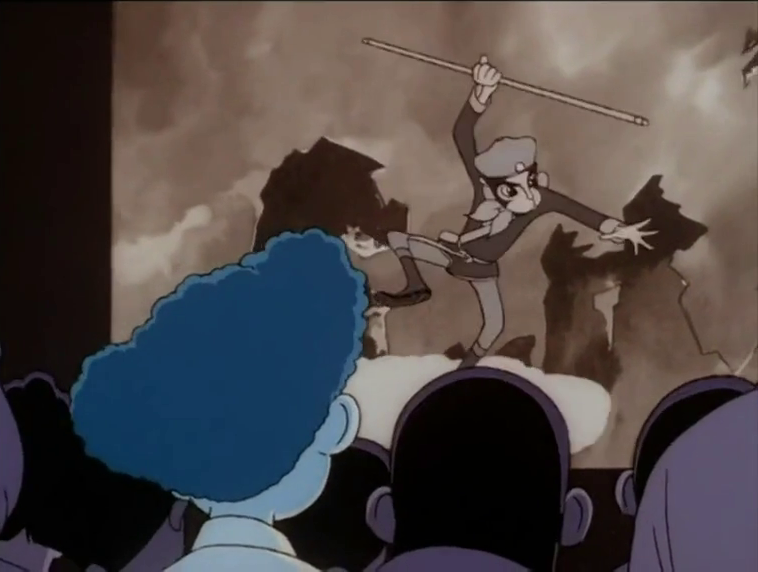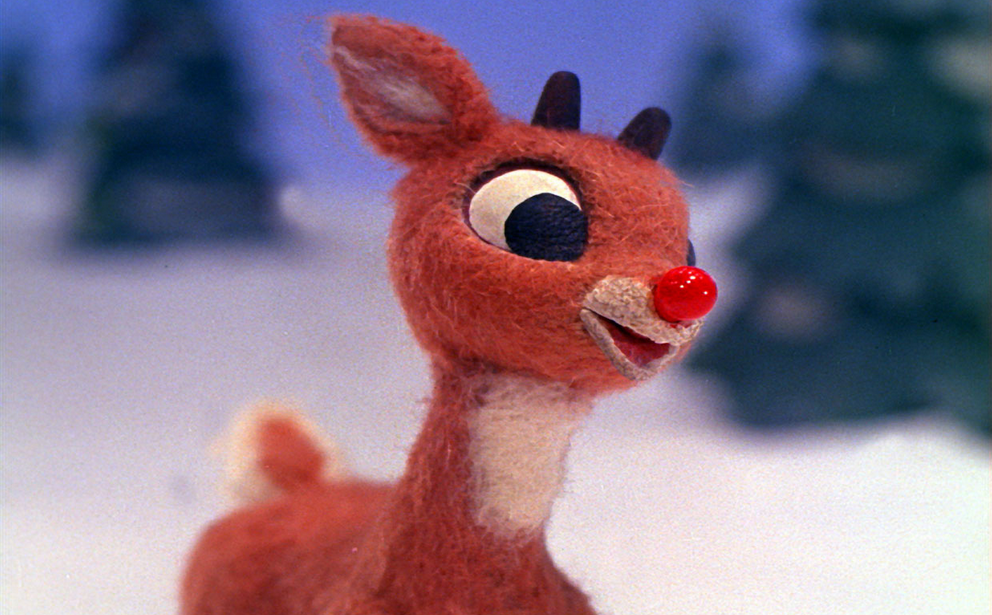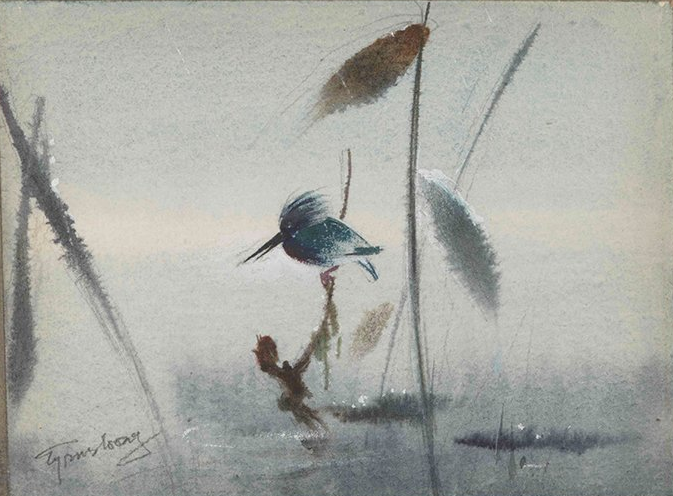Two quick pieces of Chinese-Japanese cartooning and animation trivia that I brought up of today during a conversation with @Brett_Fujioka who felt my post on Chinese manhua unfairly left a discussion of non-Chinese influences, 1 plus one more that I forgot to mention to Brett.
Trivia #1: Japanese Anime (Probably) Would Not Exist Without the 1941 Chinese Cartoon Princess Iron Fan
Chinese film scholars like Carlos Rojas and Eileen Chow love to point out that Osama Tezuka, the godfather of Japanese anime and manga, drew inspiration from the 1941 Chinese animation Princess Iron Fan 鐵扇公主,2 which directly inspired the Japanese Navy to produce the first feature-length Japanese animated film, ever:
The immediate and wide-reaching success of Princess Iron Fan left a deep impression not only on its domestic Chinese audiences, but on the Japanese Imperial Navy, which promptly commissioned ambitious animation projects of its own aimed at bolstering the patriotic spirit of Japanese children-resulting most notably in Seo Mitsuyo’s Mornotaro’s Sea Eagles (Momotaro no Umiwashi, 1943) and Momotaro’s Divine Sea Warriors (Momotaro Umi no Shinpei, 1945), the latter of which is recognized as Japan’s first feature-length animated film. Among those who watched these unabashedly propagandistic yet lyrical and delicately drawn animations of patriotic monkey-soldiers coexisting happily with colonized simian jungle natives was a Japanese youth by the name of Osamu Tezuka 手塚 治虫.3
Rojas and Chow also point out that Tezuka explicitly references the influence Princess Iron Fan and the Wan brothers had on his career in his last film Boku wa Son Goku (I Am Son Goku):4
EDIT 8/12/2015: Daisy Du has kindly gotten in touch with me to remind me that she also dedicated the entire first chapter of her 2012 dissertation on Chinese animation, titled “A Wartime Romance: Princess Iron Fan and the Chinese Connection in Early Japanese Anime,” to the influence of early Chinese animation on early manga and anime, in particular the works of Osamu Tezuka. Although I cite Dr. Du’s dissertation below as my primary source for Trivia #2, I’m embarrassed to admit her research on Trivia #1 completely slipped my mind while writing this post, which I composed rather quickly in response to a short discussion on Twitter.
Unlike Dr. Du’s excellent pioneering study, ““On the Move: The Trans/national Animated Film in 1940s-1970s China,” the short 2013 essay by Eileen Chow (which I mis-attribute to Carlos Rojas, who actually only co-edited the volume in which the essay is included), “Chinese Cinema as Monkey’s Tail,” is archived on Google Books, making it much easier for my sleep-deprived graduate student brain to track down at the time. My deepest apologies to Dr. Du for inadvertently overlooking her research in this area! Also, I clearly owe my own debt of inspiration to Dr. Du for the title of this blog post, and apparently for the screen capture of a young Tezuka sitting in a movie theater watching Princess Iron Fan, a similar image being featured in Dr. Du’s dissertation.
Dr. Du further informs me that she is working on a book length revision and expansion of her dissertation which I encourage anyone interested in learning the full extent of Osamu Tezuka’s debt of inspiration to Princess Iron Fan, which extends beyond his last film, I Am Son Goku, to his much earlier 1953-61 manga, Boku no Son Goku and his 1960 animated film, Saiyuki [Journey to the West], released in the US in 1961 as Alakazam the Great.
Trivia #2: The Animator Who Made the 1964 Stop-motion Animated Film Rudolph the Red-nosed Reindeer Created Propaganda for Japan and China During World War II
Tadahito Mochinaga (1919-1999) is is probably the coolest animator that you have never heard of. In 1938 he graduated with a degree in animation5 and within a year he was hired by Seo Mitsuyo to work on children’s films at Geijutsu Eigasha (Art Film Company) where he helped animate Mornotaro’s Sea Eagles in 1943. In 1944, Mochinaga directed his own propaganda film Fuku-chan’s Submarine for the Asahi Film Company before taking a job at the state-owned Man’ei (Manchukuo Film Association Ltd) in Japanese occupied Manchuria in June 1945.
When the war ended in August, Chinese Communist Party agents who had previously infiltrated Man’ei were able to take control of the studio and its equipment, with many of the left-leaning Japanese staff (including Mochinaga and his wife) electing to remain in China. Mochinaga spent most of the Second Chinese Civil War (1945-49) making anti-Chiang Kai-shek propaganda cartoons for the communists with Hua Junwu 华君武 and Chen Bo’er 陈波儿 at the newly formed Northeast Film Studios 東北電影公司. When the war ended Mochinaga helped Te Wei 特偉 to found the first animation studio in the PRC, the Shanghai Animation Film Studio (上海美術電影製片廠). Thanks to Mochinaga’s expertise, Te Wei’s studio was able to produce dozens of high-quality animated children’s films during the 1950s.6
Mochinaga and his wife returned to Japan in 1953 and began making stop motion film commercials. In the early 1960s he was contracted to produce a series of animated films by Arthur Rankin, Jr.,7 one of which was the classic stop-motion animation Rudolph the Red-nosed Reindeer:
Triva #3: The Concept Art and Backgrounds for Disney’s Bambi Were Inspired by Song Dynasty Ink Paintings
Finally, while the first two examples both show the influence Walt Disney had on the birth of animation in Asia, I’ve also learned that Bambi has a surprising Chinese connection. Tyrus Wong (1910- ) is a Chinese-American artist who worked as a concept and background artist for Disney during the production of Bambi and has been belatedly recognized for his contributions to visual aesthetic of the film.8
- I’m glad he raised this point, because I agree I could have been much more clear about this. I should have a post up in the next day or two with some examples of the ways manhua have been influenced and inspired by North American and European comics. [↩]
- (Produced by the Chinese animator Wan Laiming and his three brothers in Japanese-occupied Shanghai, who were in turn in turn influenced by Disney’s 1939 animated feature-film, Snow White. [↩]
- Rojas, Carlos, and Eileen Chow. The Oxford Handbook of Chinese Cinemas. Oxford University Press, 2013, pg 648. [↩]
- The whole film is available online here. [↩]
- Again inspired by Disney. [↩]
- For more about this period of Mochinaga’s life, I highly recommend Daisy Du’s 2012 dissertation “On the Move: The Trans/national Animated Film in 1940s-1970s China.” University Of Wisconsin-Madison. [↩]
- See this article for an overview of Mochinaga’s life. [↩]
- I want to thank Bruce Rusk for bringing this last example to my attention. [↩]







Pingback: The Many Faces of Sun Wukong - Nick Stember
Pingback: Don’t Call it ‘Manga’: a short intro to Chinese Comics and Manhua - Nick Stember